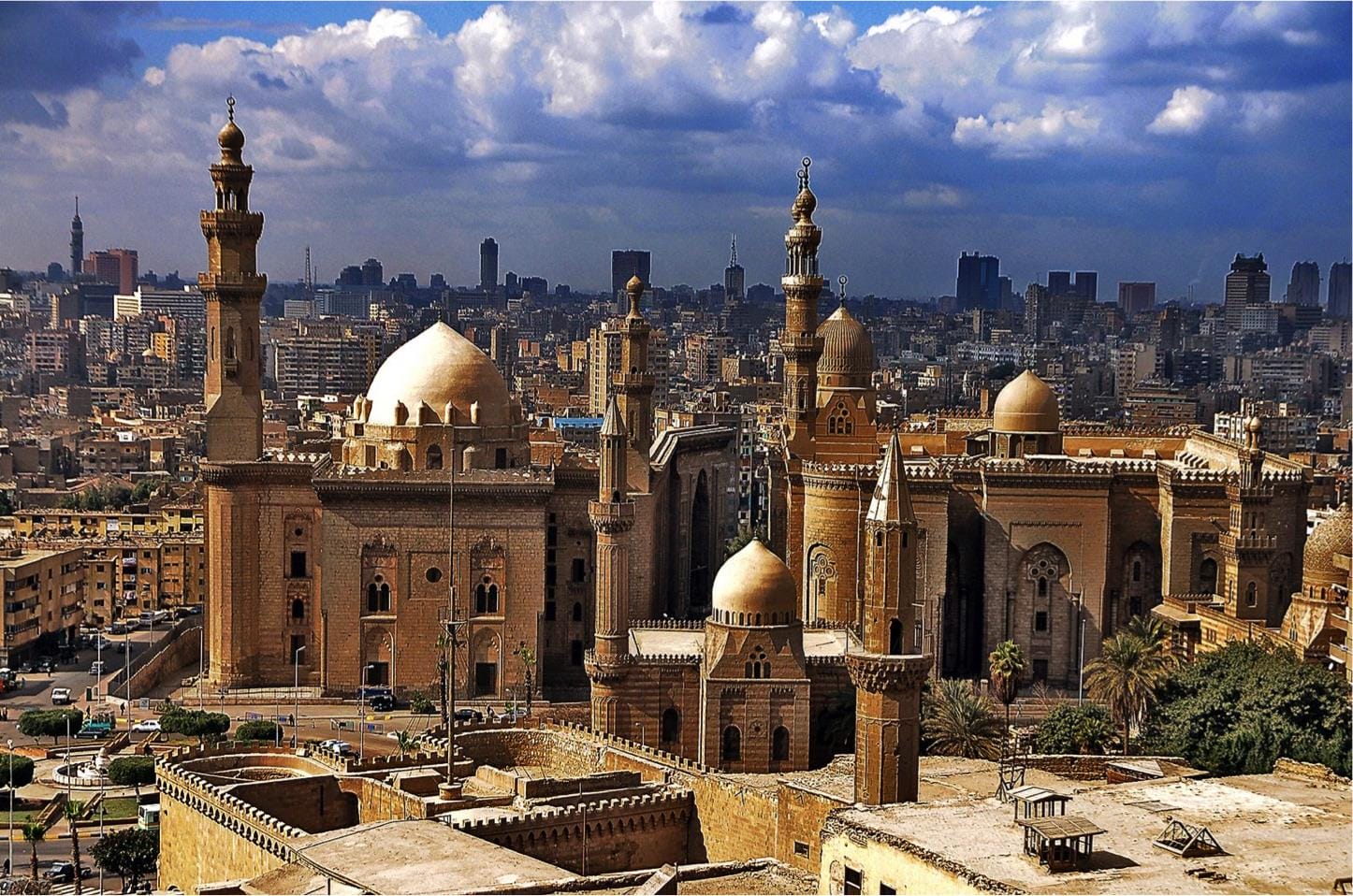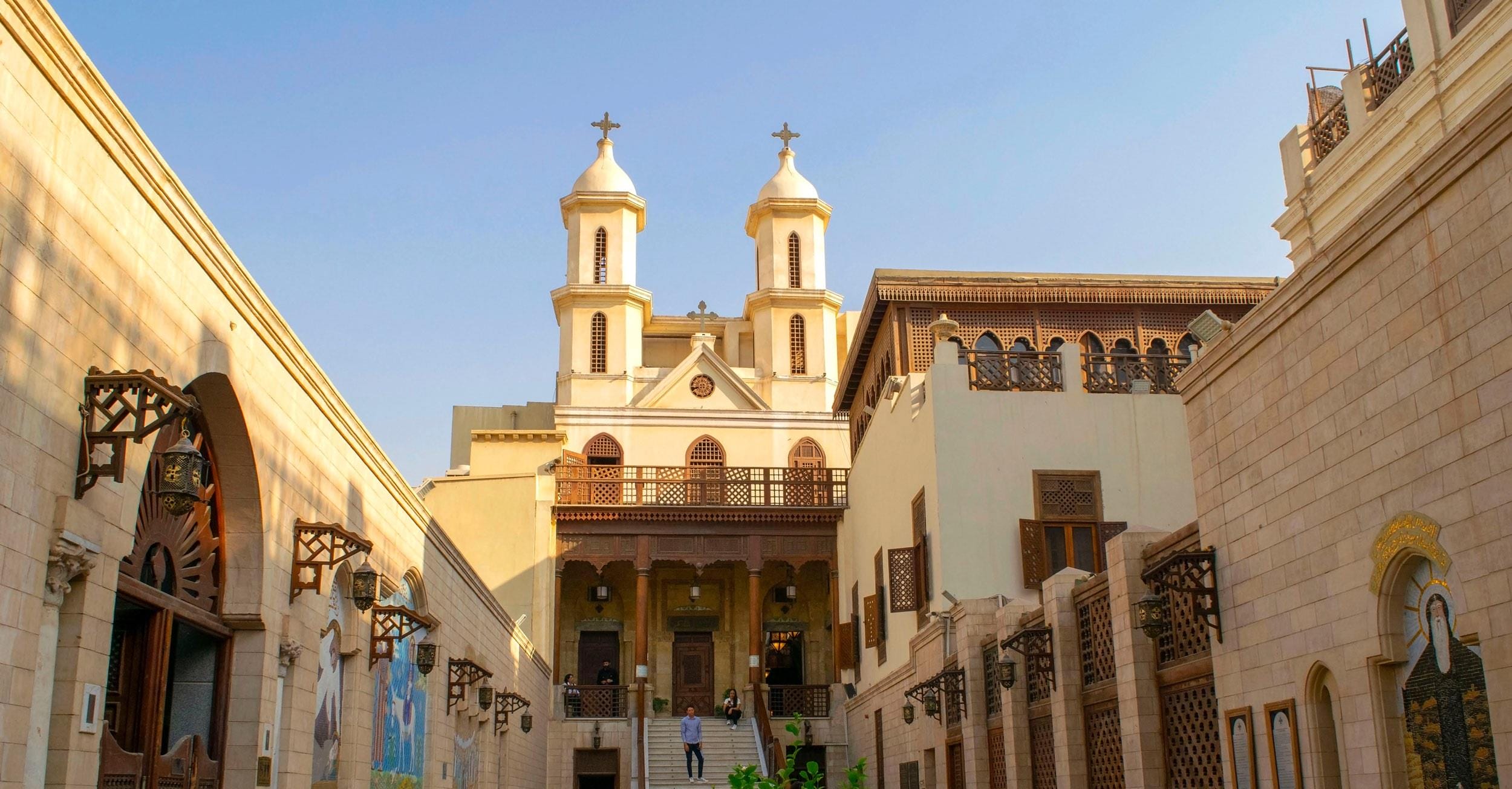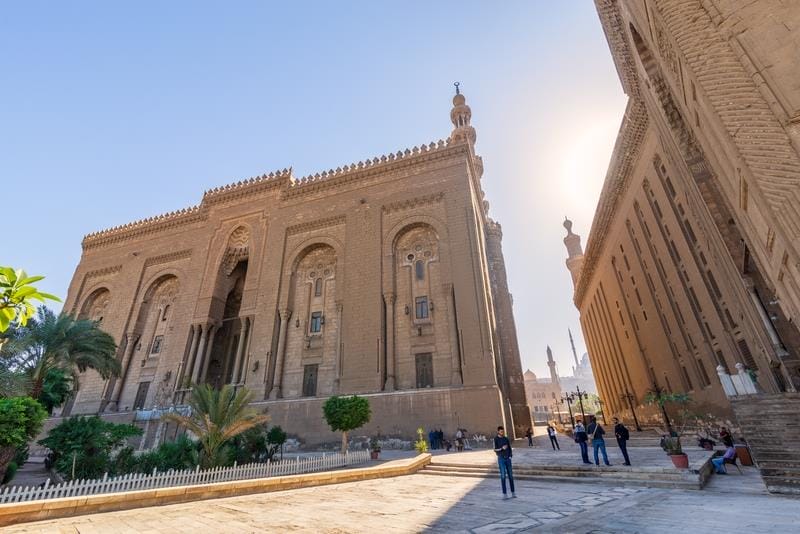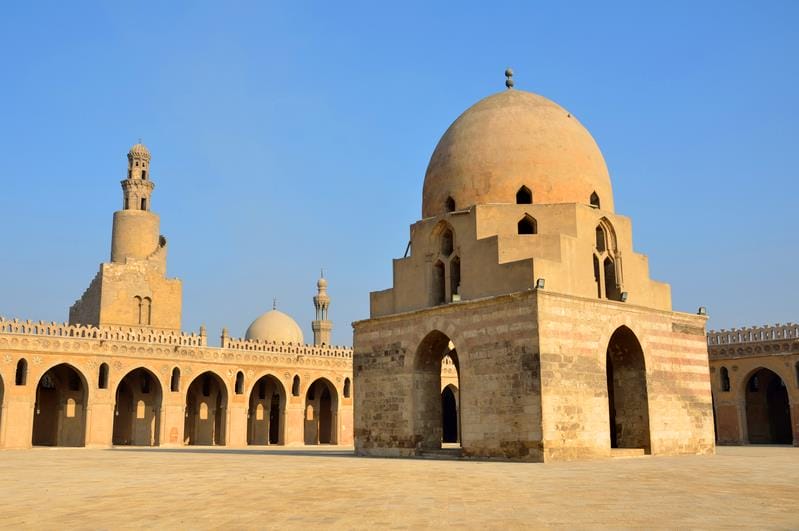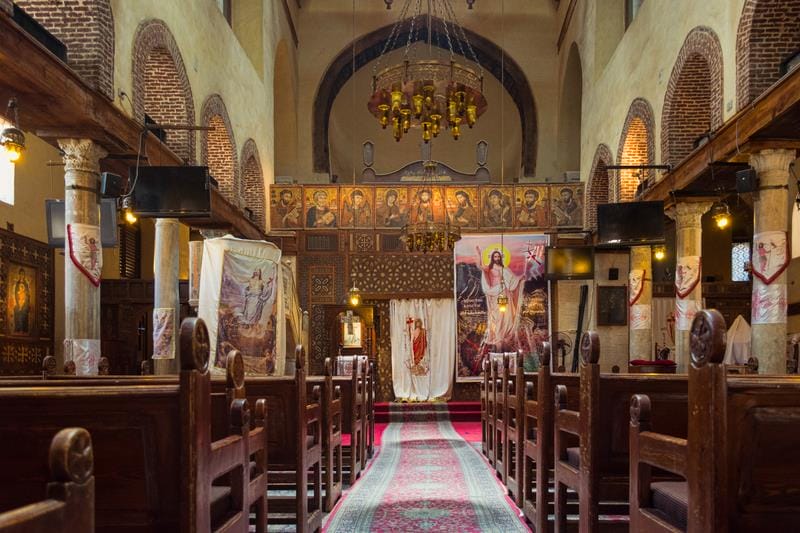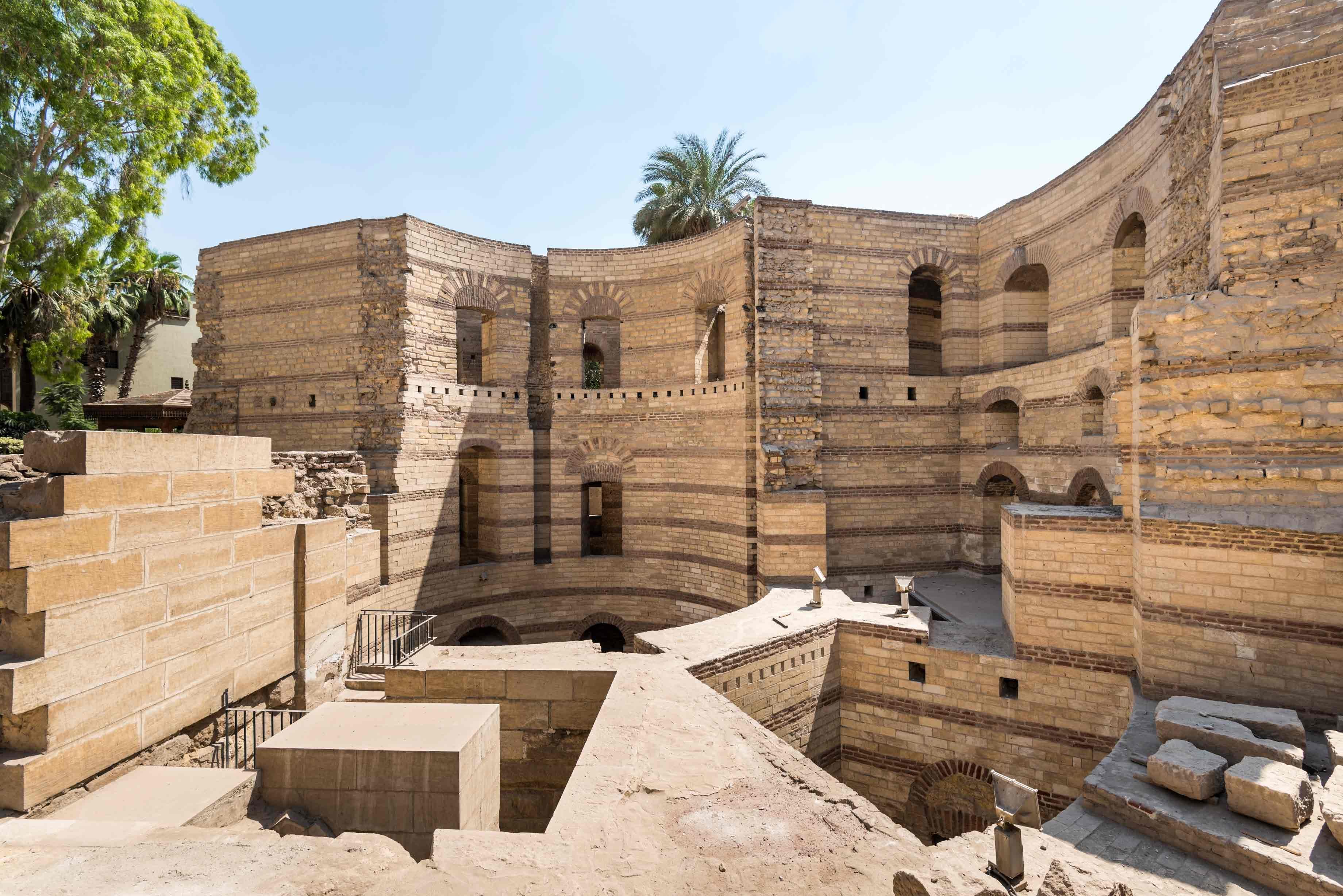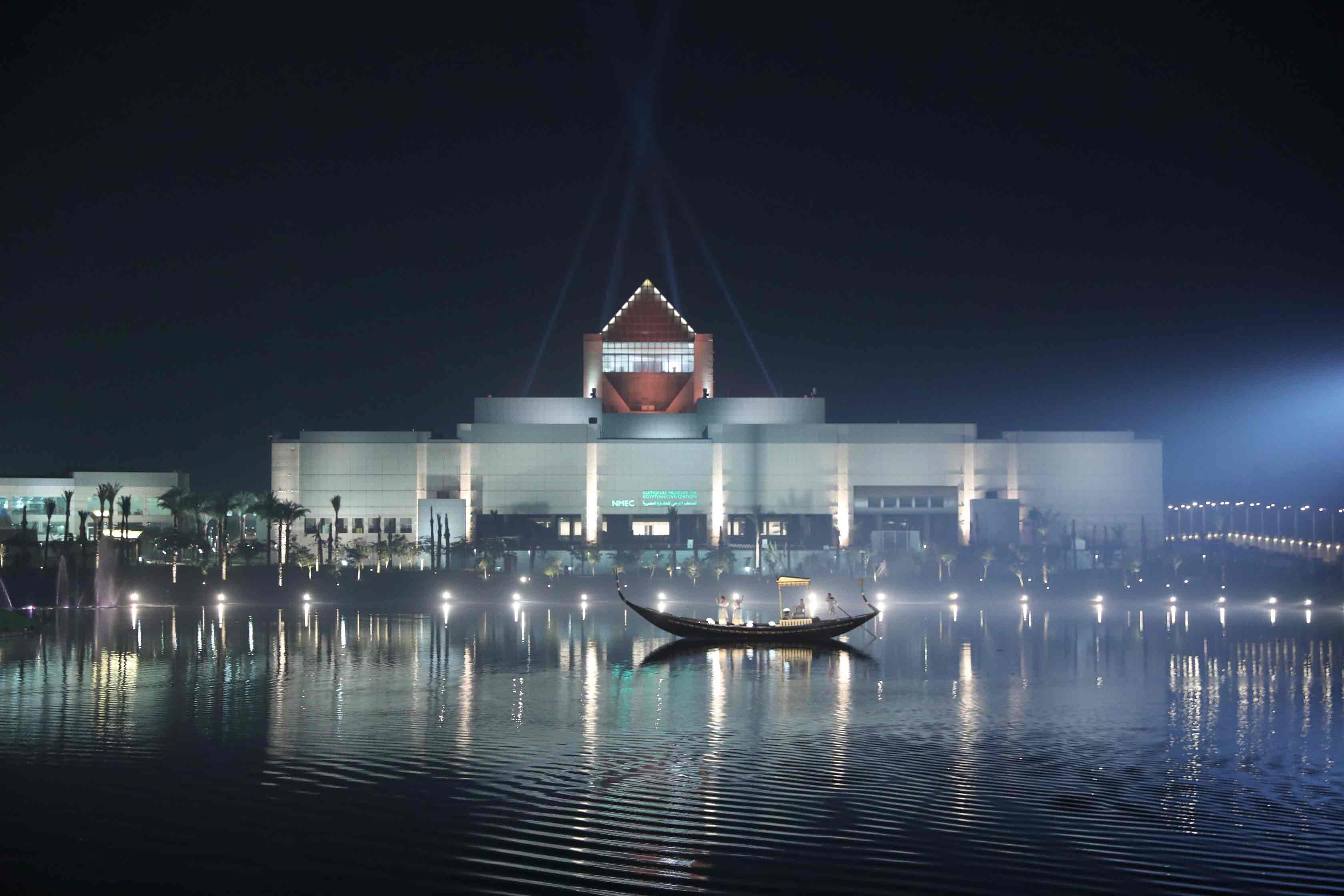Historic Cairo
Cairo’s oldest neighborhoods hold priceless antiquities and historical relics dating back centuries. Plan a walking tour of these incredible neighborhoods in Historic Cairo, a UNESCO World Heritage Site, to transport yourself through time. You can visit sites significant to the Holy Family’s journey through Egypt and view the monuments that are evidence of the country’s rich Islamic history. When Islam arrived to Egypt in 641, a new era was born. Since then, a succession of Muslim rulers and patrons left their mark on Cairo, the chosen seat of power throughout the medieval period, leaving behind stunning pre-modern Islamic architecture, art, and cultural heritage. Visit these sites to catch a glimpse of Egypt’s Islamic heritage.
Al-Muizz
Al-Muizz is a charming pedestrian street and an integral part of a UNESCO World Heritage Site in the heart of Historic Cairo. It’s a must-see because it contains one of the largest clusters of Islamic architecture in the world. The street stretches between the two old gates of Cairo, Bab al-Futuh in the north and Bab Zuweila in the south. It also runs adjacent to Cairo’s famous Khan al-Khalili Bazaar.
Pass through the monumental Bab Zuweila, the only remaining gate on the south side of Cairo’s medieval city walls with its iconic twin minarets, to enter Al-Muizz Street and wander through large streets and tiny alleyways where you’ll see buildings from the Fatimid Period all the way to the Muhammad Ali dynasty. The ancient alleys and streets are full of shops, spectacular architecture, artisans and craftsmen at work, as well as small traditional cafes and restaurants where you can grab a bite to eat.
Don’t Miss
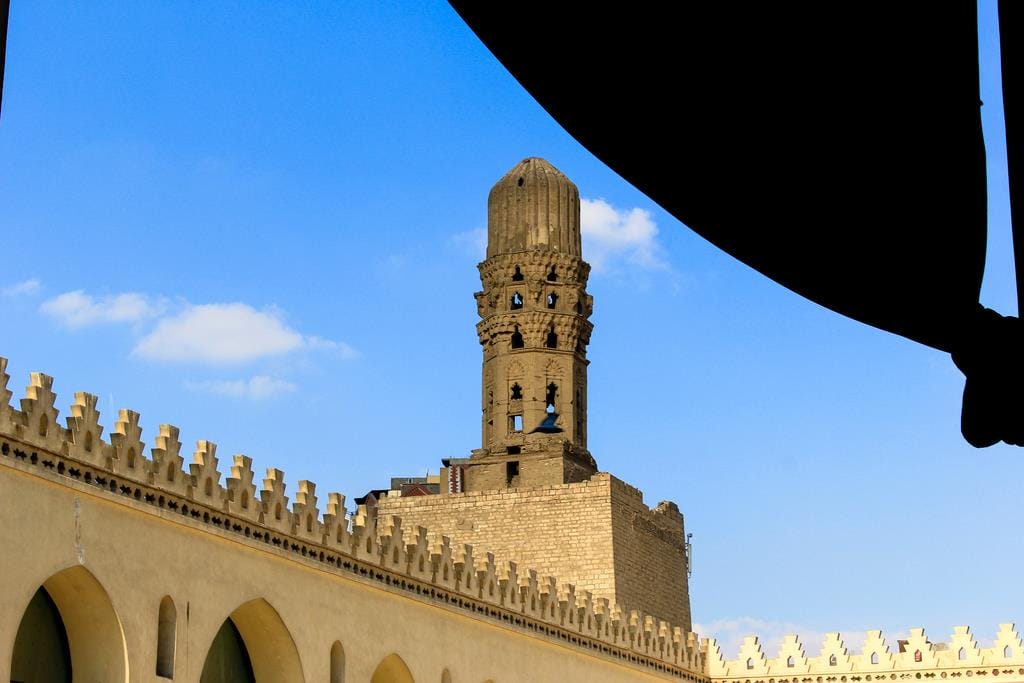
Al-Hakim bi-Amr Allah Mosque
The fourth oldest mosque in Egypt dating back to 990– 1013. The main entrance of this Fatimid-style building is breathtaking in both size and design, with its two particularly stunning minarets.

Bayt al-Suhaymi
A well-preserved example of a home from the Ottoman period located in Al-Darb al-Asfar Alley. The site serves as a museum and masterclass in Islamic architecture and decor. A cluster of buildings overlooks a picturesque courtyard with facades featuring gorgeous traditional wooden mashrabiyyas (decorative enclosed windows and balconies). Visitors can appreciate all the intricate marble floor work, wooden furniture, and ceiling decor that is still intact.
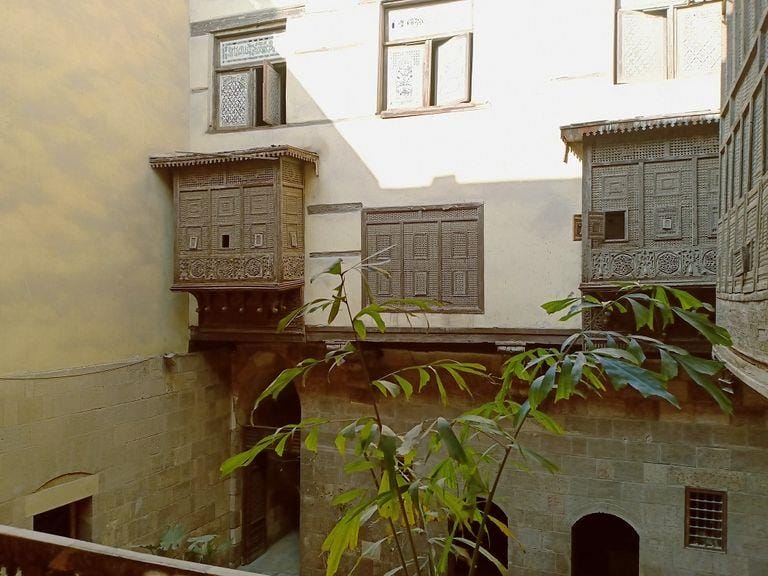
Bayt Zaynab Khatun
A magnificent home built in 1468 with flourishes of Mamluk Period architecture. The painted and gilded ceiling of the main room, along with the grand reception hall overlooking the courtyard, is representative of this beautiful period design, and a splendid mashrabiyya remains for visitors to enjoy.

Al-Aqmar Mosque
This Fatimid-era structure has the oldest surviving decorated stone facade of any mosque in Cairo. Intricate carvings and Quranic verses written in the Kufic script grace the outside of the building. The mosque is considered an architectural marvel due to the engineer’s ability to create a facade that faces the street while still implementing the proper direction of prayer inside the mosque.
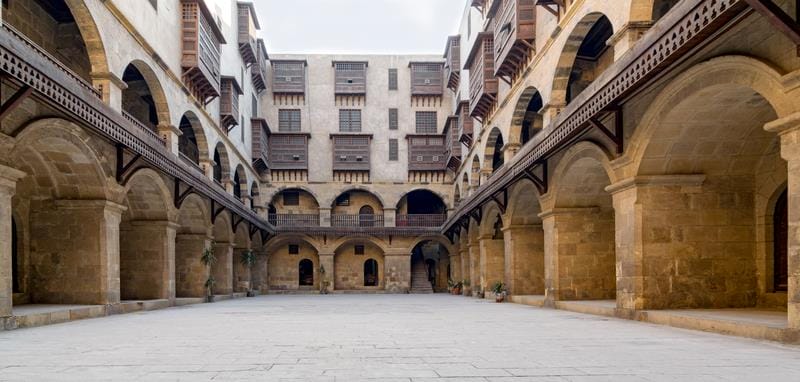
Wikalat al-Ghuri
One of the best-preserved caravanserais (ancient roadside inns for travelers moving in caravans) in Egypt dating back to 1504–1505. Today, it serves as a cultural center hosting workshops and musical and dance performances.
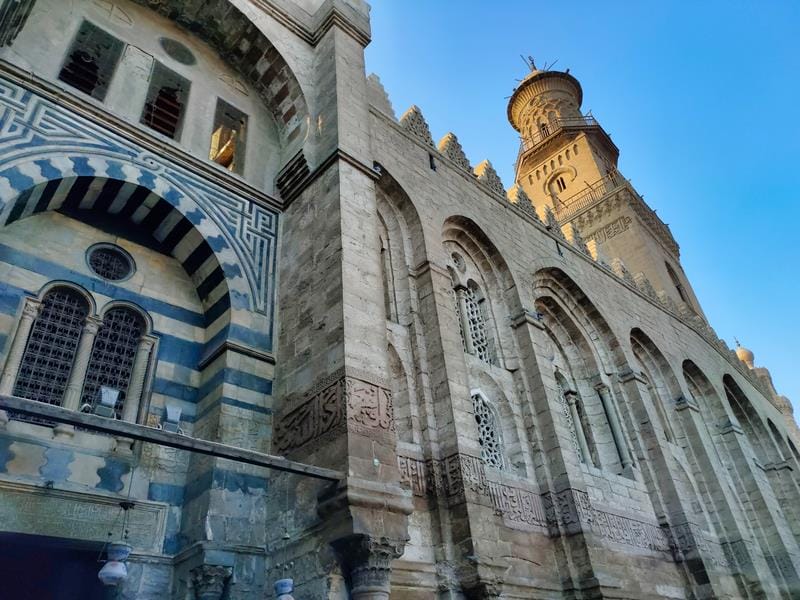
Al-Mansur Qalawun Complex
A stunning architectural complex built in 1284–1285 that contains a mosque, a school, and a hospital. The buildings feature unique designs, incorporating the use of gold and silver gilding, as well as geometric and floral motifs for decoration.
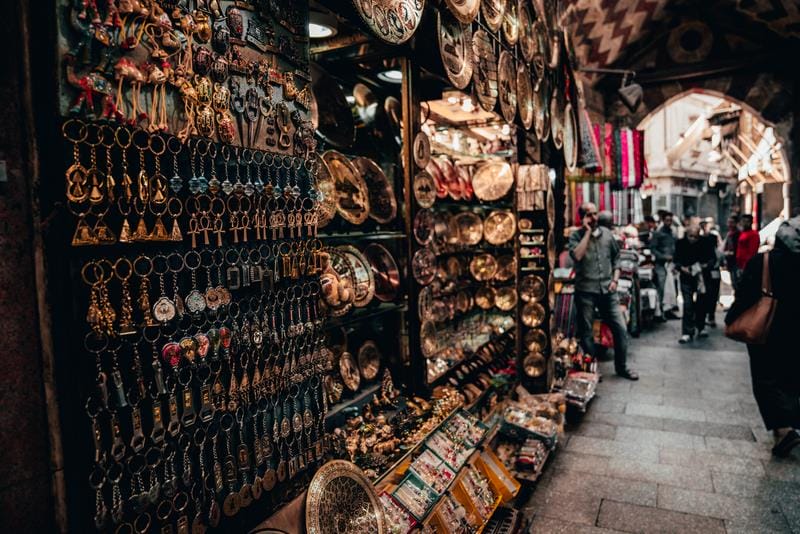
Khan al-Khalili
Cairo’s iconic medieval bazaar where you can spend hours or days browsing through a labyrinth of shops and tiny alleyways that are brimming with history and merchandise. Everything from silver and gold jewelry and accessories to antiques, stained-glass lanterns, copper, brass, incense, spices, and handmade leather goods and souvenirs can be found there.
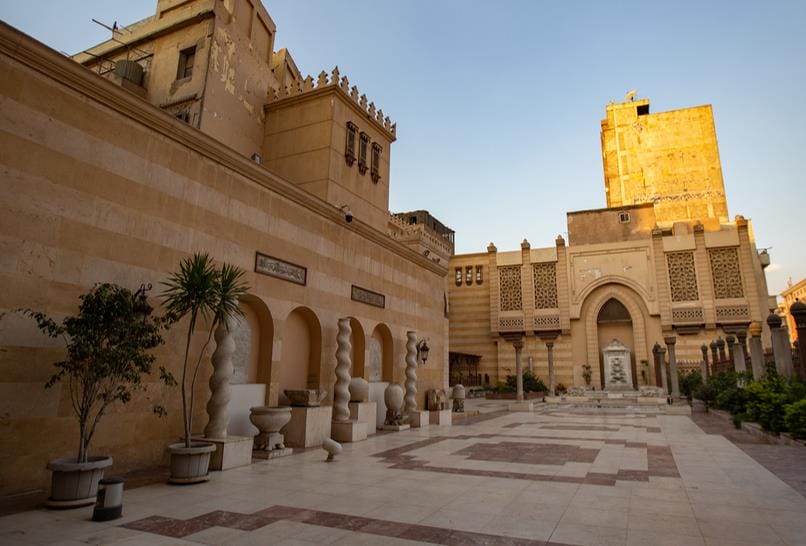
The Museum of Islamic Art
Containing one of the world’s largest collections of Islamic artifacts. Explore a wide variety of treasures ranging from everyday objects, like utensils, to jewelry, weapons, and medieval manuscripts. The museum is also accessible to researchers interested in medieval Islamic arts and science.
The Hanging Church
Referred to as Al-Muallaqa or “hanging” in Arabic, this 7th century church gets its name because it’s built on top of the ruins of an old Roman Fortress and remains suspended over its southern gate. A great number of precious icons can be found inside the church, including a series of rich iconography depicting the life and martyrdom of St George and the life of St John the Baptist.
Don’t Miss
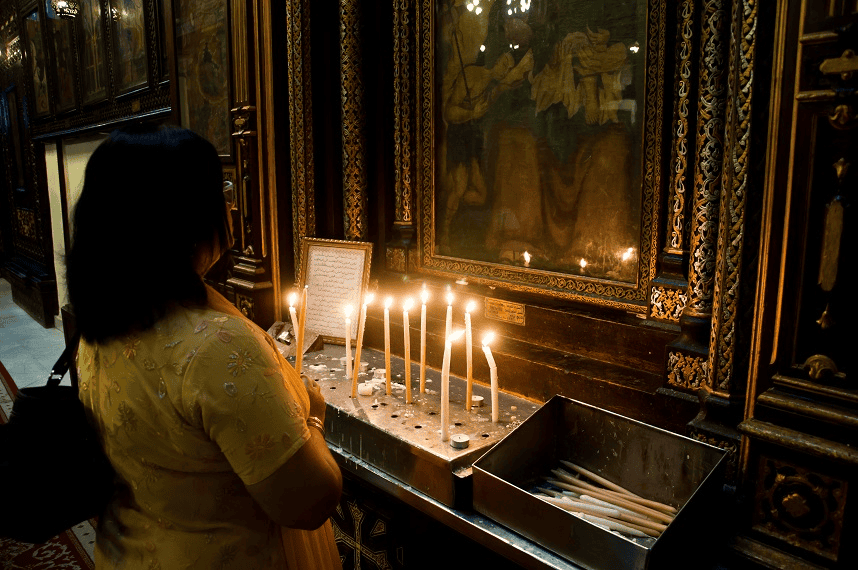
Century wall painting.
The late 13thor early 14th century wall painting of the Nativity.
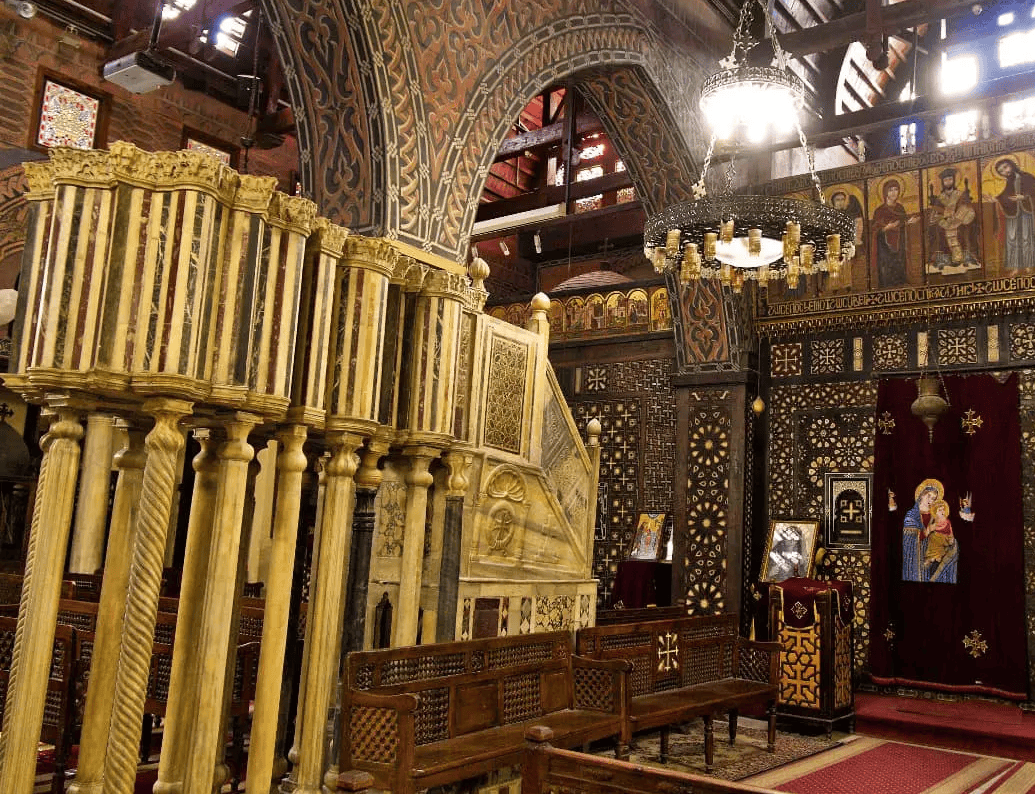
The three sanctuaries
The three sanctuaries dedicated to the Virgin Mary, St George, and St John the Baptist.
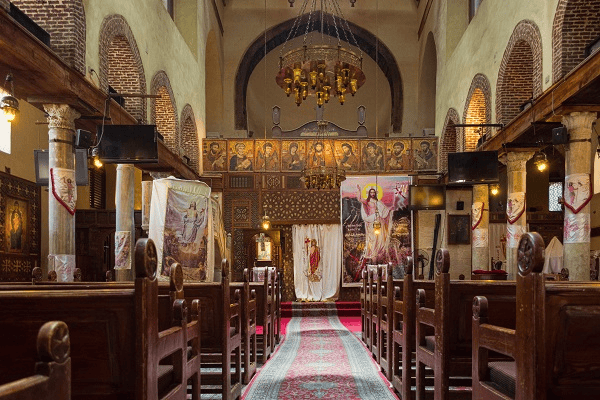
The 14th century wooden screen
Richly adorned with crosses in ebony and ivory and precious icons of the Archangel Gabriel, St Peter, St John the Baptist, the Archangel Michael, St Paul, an enthroned Jesus, and the Virgin Mary.
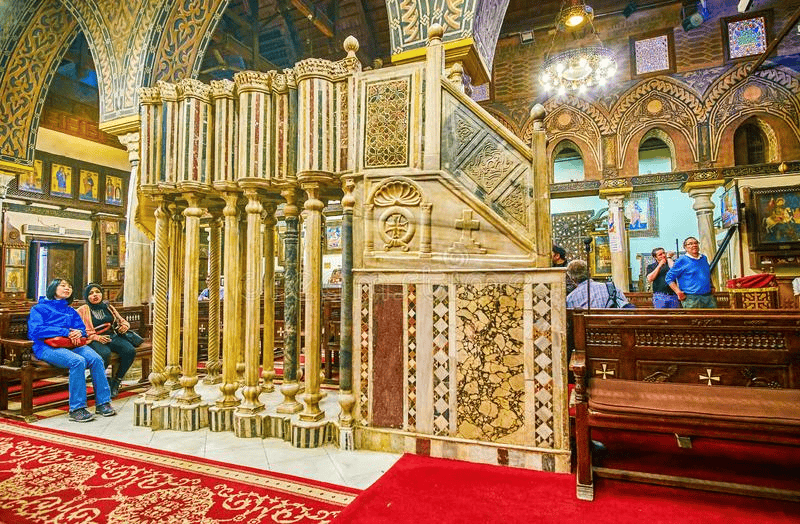
The impressive pulpit
With its 15 graceful marble pillars, some of which date back to the 12th or 13th century.
The Cairo Citadel & Citadel Square
One of the most iconic monuments in Historic Cairo, and arguably one of the most impressive defensive fortresses dating back to the Middle Ages, the Citadel has sat proudly on an elevation point on top of the Muqattam Hills for centuries. With a glorious panoramic view of Cairo, visitors can enjoy an unobstructed view of the “City of a Thousand Minarets” and snap dozens of iconic photos.
Insider Tip
- While you’re there, the area surrounding the Citadel also houses several important monuments and places of interest. The construction of the Citadel of Salah al-Din (Saladin) led to the development of the nearby Al-Suyufiyya Street, now home to palaces, mosques, and shrines dating back to the Mamluk Period, Ottoman Period, and Muhammad Ali dynasty.
-
While you’re in Muqattam, pay a visit to St Simon the Tanner Monastery, also known as The Cave Church, carved in the Muqattam Mountain. The Coptic Orthodox church is one of the largest churches in the Middle East. This hidden gem has beautifully adorned carvings of stories on the cave walls and can seat up to 20,000 people.
Don’t Miss
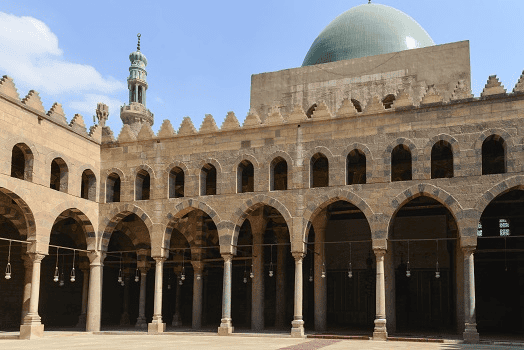
Sultan al-Nasir Muhammad Mosque
Built during the Mamluk Period in 1318 and later rebuilt on a larger scale in 1335, houses an impressive dome decorated with Quranic verses and the titles of Sultan al-Nasir Muhammad. The ornately decorated ceiling contains beautiful geometric shapes, and a magnificent pulpit is crafted from wood inlaid with ivory and mother-of-pearl.
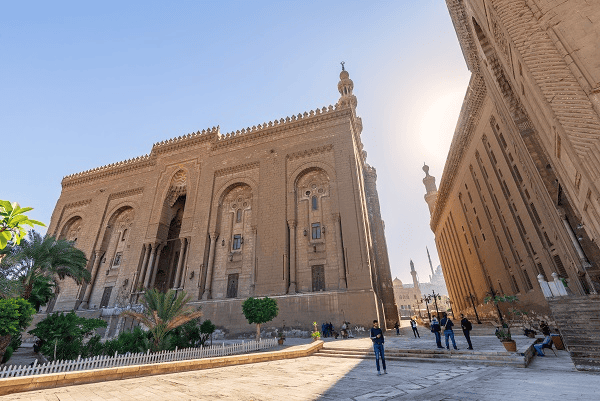
Al-Rifai Mosque
An enormous structure that houses the remains of Egypt’s last monarch King Farouk, his father King Fouad I, and his grandmother Ferial, as well as Muhammad Pahlavi, the last shah of Iran. The detailed ornamentation of the mosque’s outer walls and its massive columns distinguishes it from the surrounding landscape, with elegant minarets making their mark on the horizon.
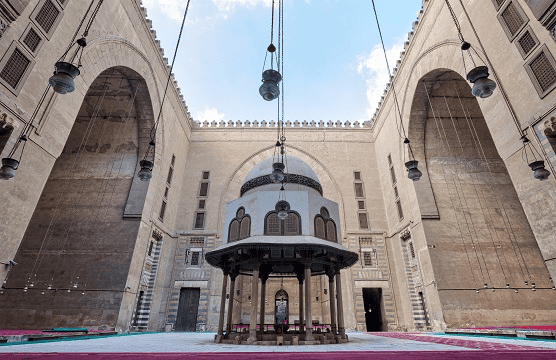
The Mosque and Madrasa of Sultan Hasan
The Mosque and Madrasa of Sultan Hasan, built in 1356–1361, one of the largest and most architecturally exquisite mosques in all of Egypt. The construction of this mosque was carried out on such a massive scale, it attracted artisans and craftsmen from all over the Mamluk empire, resulting in a breathtaking display of artistic genius. The interior and exterior of this mosque’s domes are stunning and incredibly detailed.
Al-Saliba Street
Take a stroll down Al-Saliba, one of medieval Cairo’s main streets used as a processional path for state celebrations and the gathering place for rulers. Al-Saliba has retained several spots of preserved Islamic architecture, including mosques, schools, sabils (ancient drinking water fountains), khanqas (Sufi gathering locations), hammams (public baths), and palaces.
Don’t Miss

Sabil-Kuttab Umm Abbas
A beautifully decorated historical public water fountain dating back to 1867. Built as an endowment for Khedive Abbas Helmi I, this structure is a surviving testament to the sophistication of 19th century Cairo.
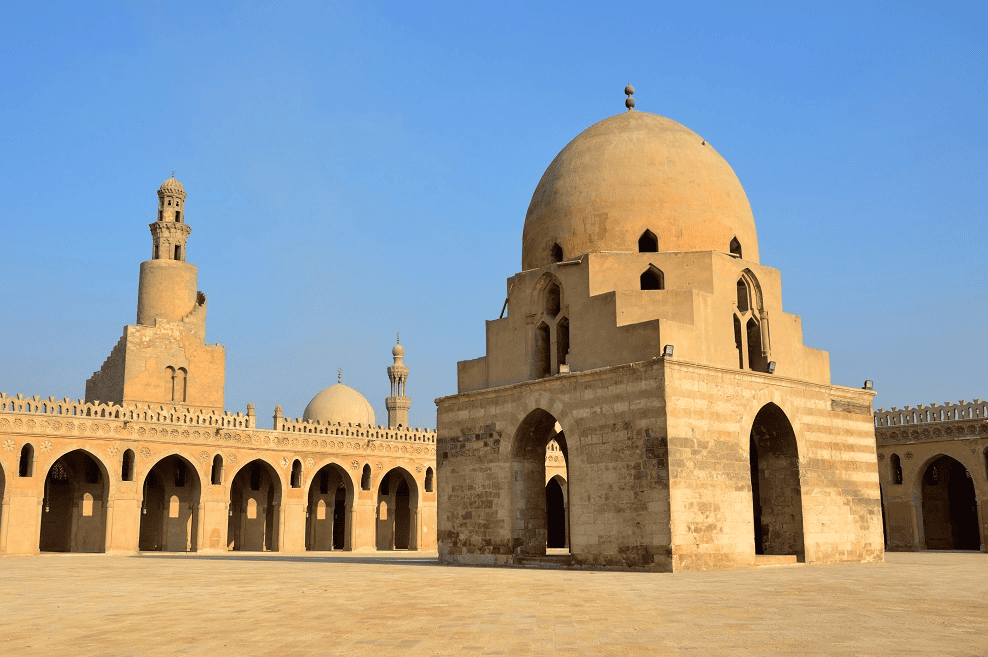
Ibn Tulun Mosque
A magnificent sprawling mosque with an eye-catching spiral minaret dating back to 876–879. Its iconic arches and courtyard windows contain geometric and foliated designs, and the impressive water fountain takes center stage with a beautiful dome and smooth marble columns. Perhaps most iconic of all is this mosque’s spiral minaret with an exterior staircase, which was probably inspired by the Great Mosque of Samarra in Iraq.
Al-Fustat (Old Cairo)
Many sites of deep religious and historical importance to the Christian and Islamic faiths. Founded by the Apostle Saint Mark in the early first century, the Egyptian Coptic Orthodox Church is one of the oldest Christian churches in the world. Many of the world’s oldest churches can be found within the protective walls of the old Fortress of Babylon, including the Church of Abu Sirga, built on top of the cave where the Holy Family sought refuge on their journey through Egypt.
Mosque of Amr ibn al-As
The Mosque of Amr ibn al-As in Al-Fustat (the first capital of Egypt under Muslim rule) is one of Cairo’s oldest and most famous Islamic landmarks. Founded in 641 by General Amr ibn al-As, one of the first companions of Prophet Muhammad, this mosque has been expanded and reconstructed many times throughout its long history, but its founding date makes it the oldest surviving mosque in Egypt and Africa still hosting daily prayers.
The Church of Saints Sergius and Bacchus (Abu Sirga)
Founded in the 7th century, this church is considered particularly sacred because it was built on the site of a cave where Joseph, Mary, and the infant Jesus sought shelter. This is the oldest church within the walls of Coptic Cairo and an important landmark on the Holy Family trail. Named in honor of the martyrs Sergius and Bacchus, the church draws religious pilgrims from around the world. Abu Sirga is based on a basilica structure and has some stunning architectural and artistic elements.
Don’t Miss
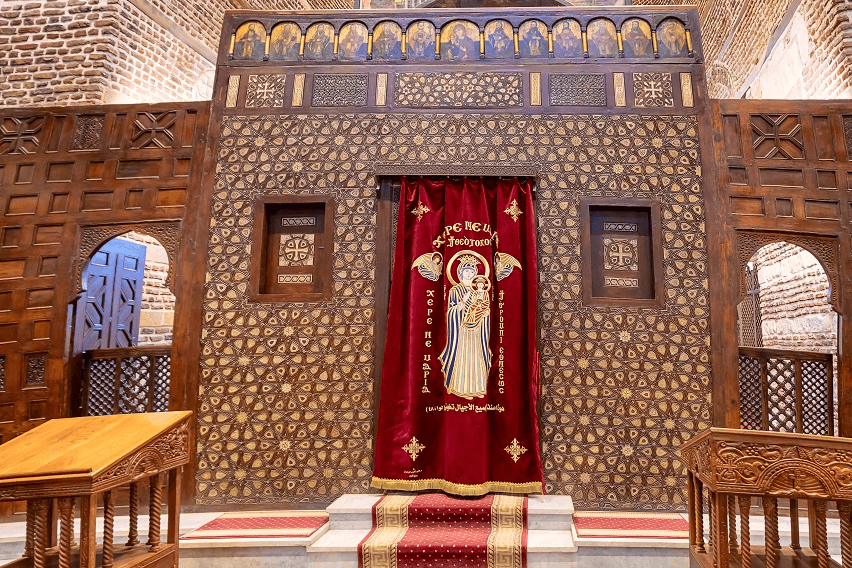
The ancient wooden screen
Separating the sanctuary from the congregation hall, which is beautifully decorated with ebony and ivory with some sections dating back to the 13th century.
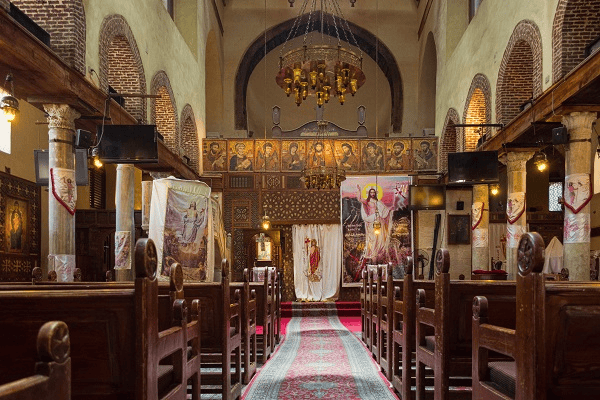
Walls of the church
The remarkable icons on the walls of the church that depict a variety of scenes from the life of Christ, the Virgin Mary, and different saints.
The Coptic Museum
Browse the largest and most magnificent collection of Coptic artifacts and art in the world. The Coptic Museum’s collection takes you on a visual journey through Coptic history, from its earliest beginnings in Egypt through to its rise as a powerful base for the Christian faith. At the museum, you will find a wealth of treasures collected and recovered from ancient monasteries and churches across Egypt, including elaborately decorated manuscripts, delicately carved woodwork, and impressive frescos with detailed religious scenes. Visitors will be able to see how Coptic art fuses with the prevalent cultures of Egypt throughout history, including ancient Egyptian, Greek, Roman, Byzantine, and Islamic motifs and designs.
Don’t Miss
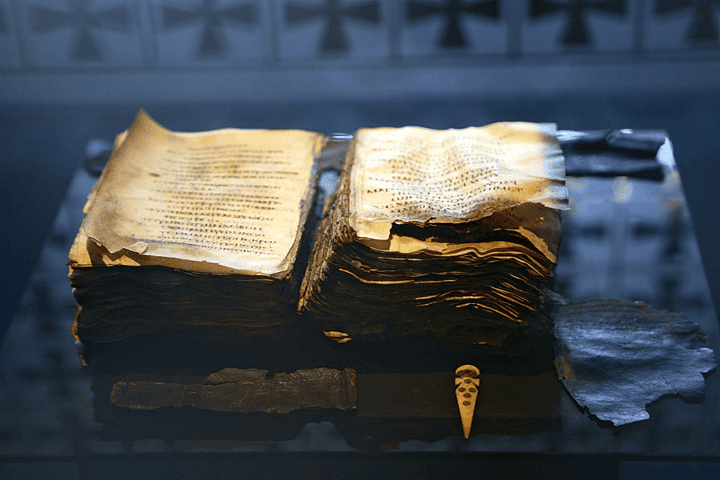
The earliest known complete Coptic Psalter(a book of biblical Psalms)
Found in a cemetery near Bani Suef under the head of a child mummy dating back to the 4th or 5th.
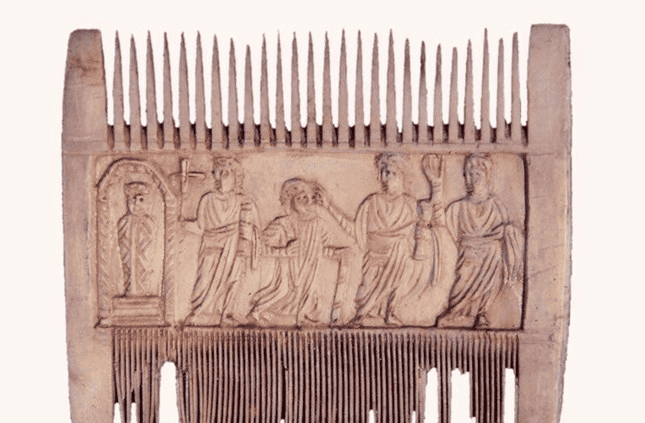
Ivory comb
An elaborately decorated and well-preserved 6th century ivory comb, an artifact that was used in burials well into the Byzantine era.
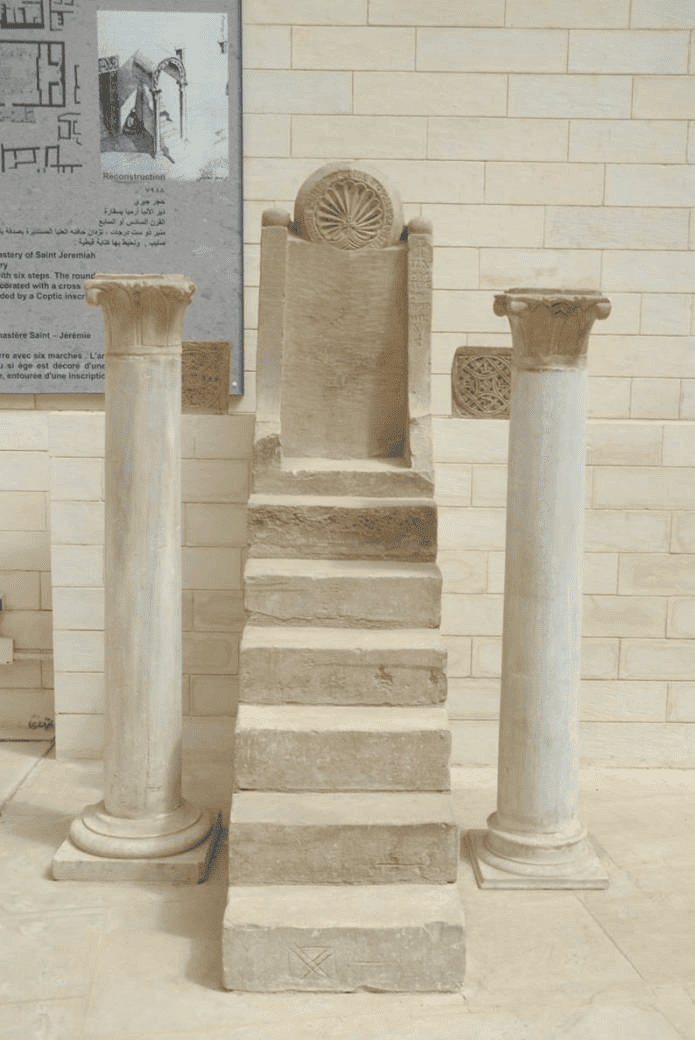
Limestone pulpit of St Jeremiah
The magnificent limestone pulpit of St Jeremiah, dating back to the 6th or 7th century.
The National Museum of Egyptian Civilization
Make sure to pay a visit to the newly-inaugurated National Museum of Egyptian Civilization (NMEC), the first museum of its kind to showcase the entire history of Egyptian civilization, from prehistory to modern times. The crown jewel of the museum is the Royal Mummies’ Hall, which displays the mummies of the ancient kings and queens of Egypt. Strolling through this exhibit is like walking through the ancient Valley of the Kings in Luxor where most of the mummies were discovered. The magnificent exhibit includes 20 Royal mummies, 18 Kings and two Queens, from the 17th–20th Dynasties.
